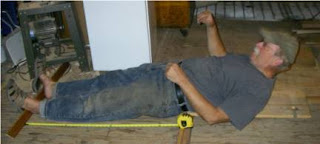Whenever people see me working on a boat with a wooden frame, invariably, somebody comes along and wants to know if the same thing couldn't be done with carbon fiber composite technology. I generally tell them that it could be but I prefer wood and that they should try the carbon fiber composites if they think that those would be a good idea.
However, more recently, I am promoting the idea of wood as the original carbon fiber composite. See above for the molecular structure of graphite. Graphite is all carbon and the molecules are arranged in a hexagonal lattice.
 Wood is made up of cellulose whose chemical arrangement is shown above. Note the hexagonal rings, similar to carbon rings of graphite. The main difference between cellulose and graphite is that cellulose has one oxygen in each ring which makes the ring a little weaker. Also strands of cellulose are held together with lignin, a natural glue. Strands of carbon fiber on the other hand need to be bonded together with epoxy, a man-made glue.
Wood is made up of cellulose whose chemical arrangement is shown above. Note the hexagonal rings, similar to carbon rings of graphite. The main difference between cellulose and graphite is that cellulose has one oxygen in each ring which makes the ring a little weaker. Also strands of cellulose are held together with lignin, a natural glue. Strands of carbon fiber on the other hand need to be bonded together with epoxy, a man-made glue.So carbon fiber composites are stronger than wood per unit weight, but not by enough to make me want to put up with the messy construction techniques that they require.
Note to Duane Strosaker - this is not a plastic mocking post. This is a post in defense of wood.
Note to everyone else - see Duane's web page on how to make carbon fiber paddles.








